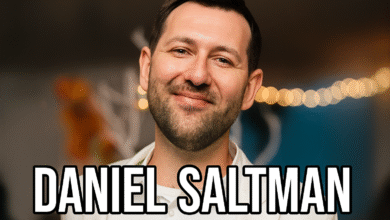Serlig: The Power of Adaptability and Resilience in the Modern World

In an age where transformation is constant and innovation drives progress, the term serlig has become increasingly significant. But what does serlig truly mean, and why is it essential for both personal and professional success today? Rooted in adaptability, resilience, and creative thinking, serlig represents a mindset that empowers individuals and organizations to thrive amidst uncertainty.
This comprehensive article explores the meaning, origins, and importance of serlig, along with its impact on business, innovation, and personal growth.
What Is Serlig? Understanding the Concept
At its core, serlig refers to a state of adaptability, flexibility, and innovation. It is not just a word—it’s a way of thinking and responding to the unpredictable nature of modern life. Those who adopt a serlig mindset remain open to change and use it as an opportunity for growth rather than viewing it as a threat.
Serlig encourages people to think creatively, to challenge norms, and to continuously evolve. Whether it’s a company rethinking its business model or an individual navigating personal challenges, the principles of serlig help transform obstacles into opportunities.
In essence, serlig is about embracing transformation with confidence and curiosity, allowing both individuals and organizations to remain resilient and future-ready.
The Origins and Evolution of Serlig
The origins of serlig date back to ancient civilizations that valued balance, harmony, and adaptability. Initially, serlig symbolized the ability to maintain equilibrium in changing environments. Over time, its meaning expanded to include resilience, flexibility, and creative problem-solving.
During the industrial and technological revolutions, serlig evolved further, becoming synonymous with agility and innovation. The ability to adapt quickly became a defining trait of successful societies and businesses.
Today, serlig stands as a guiding principle across multiple domains—from education and entrepreneurship to personal development and leadership. It’s no longer just about reacting to change but proactively shaping it.
Key Characteristics of Serlig in Today’s World
Modern interpretations of serlig highlight several defining characteristics:
-
Adaptability: The heart of serlig lies in adjusting swiftly to new conditions. Whether in business, technology, or life, being adaptable ensures long-term sustainability.
-
Innovation: Serlig fosters creativity and the courage to experiment with new ideas. This trait drives progress and keeps individuals and organizations ahead of the curve.
-
Resilience: To embody serlig is to remain strong despite challenges. Resilient people recover quickly from setbacks and learn valuable lessons in the process.
-
Collaboration: Serlig thrives in environments where teamwork and shared perspectives exist. When diverse minds come together, innovation naturally follows.
-
Continuous Learning: A commitment to learning keeps the spirit of serlig alive. It ensures that one’s skills and mindset remain relevant in a rapidly evolving world.
These characteristics make serlig not just a concept but a lifestyle—one that emphasizes growth, flexibility, and sustained success.
Why Serlig Matters in the Modern Era
In the 21st century, where change is faster than ever before, serlig has become an indispensable quality. It allows both individuals and companies to remain competitive and proactive.
Businesses that embrace serlig adapt more efficiently to market changes, technological disruptions, and shifting customer expectations. Instead of resisting transformation, they harness it to create opportunities. This adaptability results in innovation, profitability, and long-term growth.
For individuals, serlig supports personal development. It nurtures confidence, problem-solving ability, and mental strength—all of which are vital in today’s unpredictable landscape.
Ultimately, serlig bridges the gap between uncertainty and opportunity, enabling sustainable progress in both personal and professional contexts.
Serlig in Business: The Key to Strategic Agility
In business, serlig represents the art of balancing stability with flexibility. Companies that incorporate serlig principles remain agile in the face of market changes, economic shifts, and global challenges.
For instance, tech companies that practice serlig continuously innovate, develop new products, and pivot strategies when necessary. This mindset encourages risk-taking and experimentation—two factors that drive long-term success.
Additionally, organizations built on serlig promote collaboration and open communication. Employees feel empowered to contribute ideas, fostering a culture of innovation. The result is a dynamic business environment that thrives even in uncertain times.
Incorporating serlig into strategic planning helps leaders anticipate challenges, adapt swiftly, and stay ahead of competitors. It transforms a business from being reactive to being proactively innovative.
Serlig and Personal Development: A Growth-Oriented Mindset
Beyond business, serlig profoundly influences personal development. It teaches individuals how to embrace change positively and use it as a steppingstone to self-improvement.
Practicing serlig begins with self-awareness—understanding one’s strengths, weaknesses, and potential areas for growth. By maintaining a curious and flexible mindset, individuals can develop resilience and confidence to face life’s uncertainties.
Continuous learning and mindfulness also form part of the serlig approach. Being open to new experiences, acquiring fresh knowledge, and reflecting on personal progress enhances adaptability and overall well-being.
Ultimately, serlig helps people grow stronger, smarter, and more empathetic—traits that are essential for success in any area of life.
Practical Ways to Apply Serlig in Daily Life
To truly live by the serlig philosophy, one must integrate its principles into daily routines:
-
Embrace Change: See change as an opportunity, not a threat. Adjust and learn from it.
-
Stay Curious: Keep exploring new ideas, skills, and technologies.
-
Collaborate Effectively: Value teamwork and diverse perspectives.
-
Practice Mindfulness: Reflect regularly to stay focused and grounded.
-
Set Flexible Goals: Adapt goals based on circumstances while maintaining your core values.
Applying these practices ensures that serlig becomes a sustainable lifestyle choice rather than a temporary mindset.
The Future of Serlig: What Lies Ahead
The relevance of serlig will only continue to grow. With the rise of artificial intelligence, climate change, and shifting global economies, adaptability will be the key to survival and success.
Future applications of serlig will likely extend into sustainable innovation, digital transformation, and mental well-being. Businesses and individuals that embody serlig will lead the way in building more flexible, ethical, and resilient societies.
As education systems evolve, serlig may also become an essential teaching principle—helping students develop the emotional intelligence and adaptability needed for future challenges.
In every way, serlig will remain a guiding light in navigating the unknowns of tomorrow.
FAQs About Serlig
1. What does serlig mean?
Serlig refers to a mindset centered on adaptability, resilience, and innovation. It helps individuals and organizations thrive amid change.
2. Why is serlig important today?
In a rapidly changing world, serlig enables people to embrace transformation and turn challenges into opportunities.
3. How can I apply serlig in daily life?
You can apply serlig by staying open to change, engaging in lifelong learning, and maintaining a flexible mindset in every situation.
4. Is serlig only useful in business?
No, serlig is relevant across all aspects of life—from education and health to personal development and leadership.
5. What are the key traits of a serlig mindset?
Adaptability, innovation, resilience, collaboration, and continuous learning define the serlig mindset.
exploreclarion



